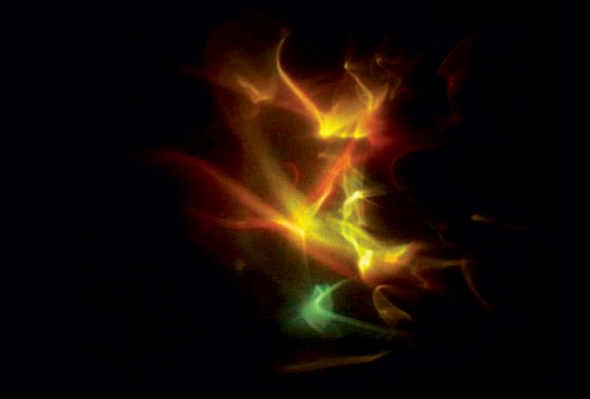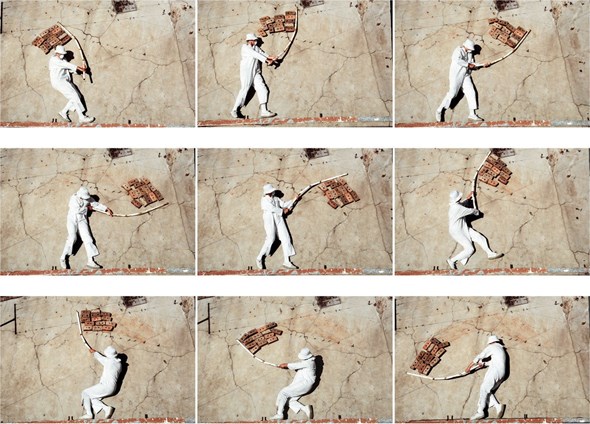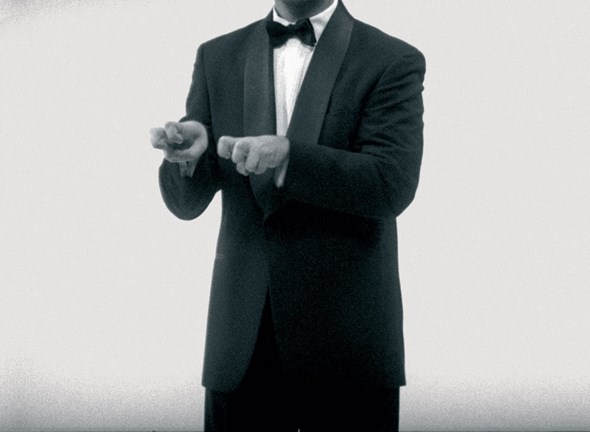By Candice Breitz

Kerry Tribe
I was an instant fan when I encountered Kerry’s work for the first time in 1998: The Audition Tapes documented a series of castings during which actors were asked to re-perform scripts that Kerry had transcribed from interviews with her own family. Her exploration of the slipperiness of memory, and her evocative probing of the blurry area between lived life and scripted life, have continued to produce riveting results. Kerry is currently completing an ambitious trilogy that explores the relationship between memory and cinema, via visions of the Northern Lights and recollections of UFOs. The complete trilogy will be shown for the first time at Künstlerhaus Bethanien in Berlin in September 2006. *1973 in Cambridge, lives in Los Angeles and Berlin
Robin Rhode
Robin straddles drawing and cinema in his animated investigations of urban space. Photographs and films that might at first seem charmingly naïve are in fact subtly laced with sharp social commentary and sophisticated allusions to the history of art. His sly occupations of real and representational space owe as much to street life and graffiti culture as they do to Muybridge and Duchamp. In Stone Flag (2004), Robin struggles with stoic absurdity to hold a flag made out of brick fragments aloft. His humorous sketches enacting moments of urban resistance are made no less urgent by our awareness of their chalky ephemeralness. *1976 in Cape Town, lives in Berlin
Dictator, 2006
Jordan Wolfson
My first conversation with Jordan took place when we bumped into each other at a video rental store in Berlin-Mitte: we were both on the hunt for the right bit of footage for works in progress. Jordan’s work chews up media history and re-presents us with our own viewing memories re-written as conceptually elegant short films that always leave one wanting to see more. A short film by Jordan, in which a tuxedo-clad man frantically re-performs the final speech from Charlie Chaplin’s The Great Dictator in sign language, was a distinct highlight of this year’s Whitney Biennial. *1980 in NYC, lives in New York and Berlin
Silence Plateau, 2006
Marcelline Delbecq
Though photographs or films often serve as the starting point for Marcelline’s work, the images tend to have vanished by the time the work is complete, replaced by a poetry grounded in the visual but is ultimately strikingly independent of it. Her neon sculpture Silence Plateau (2005) takes muteness as its subject, commemorating the moments of silence that are required between takes on a movie set to record room tone. She asks us to imagine a cinema devoid of both sound and image. Her invitation to engage in the act of interpretation offers a refreshing alternative to being spoon-fed by Hollywood. *1977 in Paris, lives in Paris
SM at UN, 1998
Jun Yang
Jun Yang’s work offers multi-layered commentary on the fragility of nationalism and identity, commentary that succeeds in being political without being pedantic. Personal observation and subjective experience are set against the backdrop of global capitalism. His X-Guide (2004) offers foreigners a set of absurd yet poignant guidelines for accelerating their assimilation (“Get a formal hair-cut. Not too funky”, “Don’t spit on the ground”). In another work, Jun metamorphoses—not entirely convincingly—from a salary-man into Superman. Jun eliminates all boundaries between documentary and personal narrative. His work meditates on the fluidity of history. *1975 in Qingtian, lives in Vienna and YokohamaCANDICE BREITZ was born 1972 in Johannesburg, lives in Berlin. She lived her first twenty years in South Africa, then spent a decade in the United States, before moving to Berlin in 2002 for a decade of Europe. She plans to move to Tokyo when she turns forty. She can’t believe that she’s managed to turn cutting-and-pasting into a full-time living. She thinks that all good art invites one to reevaluate things that one thought one already knew and understood. She insists that everyday life makes the best theatre. She is convinced that Käsekrainer is the food of the gods. She doesn’t have a website. In 2005, her video installations could be seen at the Venice Biennale, Palais de Tokyo (Paris) and Castello di Rivoli (Turin).
